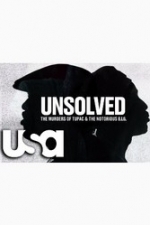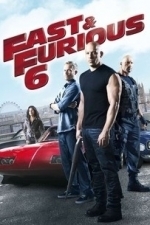
Verse of the Day Bible
Reference and Lifestyle
App
Quick & Easy Daily Bible Verse in the palm of your hands! Read a new verse from the Bible every...
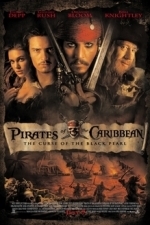
Pirates of the Caribbean: The Curse of the Black Pearl (2003)
Movie Watch
Blacksmith Will Turner (Orlando Bloom) teams up with eccentric pirate "Captain" Jack Sparrow (Johnny...
Debbiereadsbook (1449 KP) rated Hellion (415 Ink #3) in Books
Sep 18, 2019
This is book 3 in the 415 Ink series, but you don't NEED to have read books one, Rebel, and two, Savior, before you read this one. You SHOULD though, because it will give you a better picture of this family group and how they work. Plus, they were both 5 star reads.
This one?? Not so much. And I cannot figure out why! Well I can, and I'll try to explain in a bit.
Oh don't get me wrong, its still a fabulous book, very well written form both Ivo and Ruan's point of view. Its well told, its emotional, its sexy, its a good book!
It just doesn't have that sledgehammer to the chest of such heartbreaking emotion that Gus and Mace's story carry. It DOES have deep emotions, especially when Ivo is talking to Ruan about *that* day and how it led him to do what he did and what happened after, but I kept waiting for Ivo to slip back, for *something* to happen to tip him over the edge. Maybe I'm becoming very mean in my old age, and wanting characters to fall apart so badly cannot be a good thing, but thats how I felt here, and I'm all about the book feelings.
I loved how Ruan questioned Ivo about his clothes, his image, the way he is, NOT to make him change, but to understand Ivo better. Loved that Ivo gave Ruan the time to process everything.
Loved that all the brothers pop up, there is a little bit of overlap to Mace's story. There is also a little bit that gives you Luke and his story. Now, when Ivo was at his tattoo thing, I saw this coming at me, what I did NOT see what how James and Luke knew each other and what happened then. I look forward to reading their story!
And Bear? Oh I have a feeling Ms Ford might have saved the best for last. Being the eldest brother in the family looks like he is the last to fall, and I cannot wait for his story!
So, I'm sorry Ivo wasn't quite the a**hole I thought he was going to be, given how much trouble he caused Ms Ford, but I did enjoy his and Ruan's tale, I just did not love it like I did Mace and Gus'
4 great, good stars
**same worded review will appear elsewhere**

Bible Reina Valera
Book and Lifestyle
App
Bible in Spanish RV (Reina Valera) Version: Reina Valera - Offline do not need an internet...
Merissa (12929 KP) rated Lacewood: A Novel of Time and Place in Books
Jun 19, 2019
There was information about Katie, but nothing too much about what she did prior to being at Lacewood, just that she was very wealthy. You learn more about the characters from the past as Katie delves into the stories behind Lacewood. Will is the main character in the present, and to be fair, what you see is what you get with him. You don't actually get too much backstory, or even that much involvement, with him.
Although I enjoyed having this book split into three parts (present, past, present), at the same time it was a bit jarring when it changed. There was no build-up to the change, it just happened. And when we returned to the present, it felt like quite some time had passed, and yet I have no idea how long it was.
For me, the main characters were Annie and Jon. They are the ones that made this story for me, involving me in their lives, and wanting to know exactly what had happened to them. I also wanted to know more about Molly and her baby, and how they coped after Luke was killed.
A gentle read, with oodles of Southern charm, I have no hesitation in recommending this. This was the first book by this author I have read, and I wouldn't mind reading more of her work.
* A copy of this book was provided to me with no requirements for a review. I voluntarily read this book, and the comments here are my honest opinion. *
Merissa
Archaeolibrarian - I Dig Good Books!
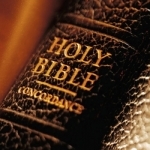
HolyBible K.J.V
Book and Education
App
Holy Bible K.J.V. Easily navigate through the Word of God by Book,Chapter and Verse! Order of the...
JT (287 KP) rated Fast & Furious 6 (2013) in Movies
Mar 10, 2020
After the opening credits montage, agent Hobbs (Johnson) comes knocking. His offer requires all the team converge once again, this time they have to track down and capture a ruthless mercenary called Owen Shaw (Luke Evans). Hobbs and Toretto have to stand side by side working together to take down the villain. Letty of course has returned and is working for the bad guys but has no memory of her past life. If you’re a true fan then the plot will reveal more back story and as it turns out part six is practically a sequel to part four with past villains announcing a few home truths.
The film and action is set in the heart of London which, includes a car chase that defies belief, a ménage à trois of fist fights on the underground, shoot outs and a drag race that drifts through Piccadilly Circus. The action is pulsating and over the top but you shouldn’t care in the least about that. What were you expecting the film to do? Each vehicular sequence is more mind bending than the next.
Take the opening chase for example. A modified F1 style car pursued by Toretto and his crew as well as local police weaves its way through the streets with the ability to flip oncoming cars. Justin Lin who directed the last four films is well in control and more than happy to up the action.
Fast and Furious 6 is guilty of plot holes, but these will only be deconstructed by people who have nothing better to do. That said, even I was left wondering what distance the longest runway in the world was? There is a good level of humour with Tyrese Gibson’s Roman providing much of the light heartedness that the film needed. Let’s face it The Avengers had the same level of action and humour mixed and that seemed to work.
One of the dangers for this was having a cast that was pretty extensive, regrouping the team meant that there was jostling for position. But on the whole everyone has their time to shine and no one is really cast to the shadows. Evans does a good job as the main antagonist and Gina Carano also proves her worth after the abject Haywire a few years back.
Fast and Furious 7 takes place back in LA after the events of this film and has a teasing post credit sequence that will bait those fans to come back once again. James Wan steps into the directors chair for the seventh film switching from the comfort of the horror genre. I found Fast and Furious 6 to be a highly entertaining film, and you’ll need to check your brain in at the door. To quote a cliché it ‘does what it says on the tin’, and doesn’t take itself too seriously.
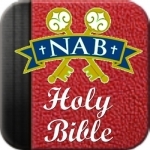
Catholic New American Bible Revised Edition
Reference
App
This iPhone/iPad app has been approved by the United States Conference of Catholic Bishops (USCCB). ...
Cody Cook (8 KP) rated A Black Theology of Liberation in Books
Jun 29, 2018
One major issue for Cone is one of authority. The experience of one group of people (the oppressed) becomes equivalent with universal truth, and not simply an important concern in Christian theology. In other words, Cone makes his own experience the judge of who God is and what God is for. While “white” (a term used by Cone not so much to reflect skin color but an oppressor mentality) Christianity commits this grave error without realizing it, Cone does so with full knowledge. So, for instance, while a conservative “white” theologian would say that his own views and actions *should* be directed by the scripture (whether or not he does in fact direct them by this standard), Cone makes the judgement of the oppressed black community the ultimate truth for them– and if mass violence against whites is decided by the group as the best means to effect their liberation, so be it. Cone explicitly distances himself from the approach of King, identifying more with the violence-prone philosophy of the Nation of Islam as propounded by Malcolm X. If someone criticizes his approach, he seems to assume that they’re doing so as a “white” oppressor and should be ignored– an oppressor has no moral right to question the rightness or wrongness of the actions of the people he is oppressing. This of course ignores the criticisms of violence, even from the oppressed, of black Christians like Martin Luther King Jr., Desmond Tutu, etc. Cone is also unfortunately either unfamiliar with or unconvinced by pacifist Christian claims to be committed to peaceful action, since he equates non-violence with inaction and acquiescence. While he is absolutely correct in seeing liberation as an important theme in the Christian faith, he, like “white” religionists, allows his own experience and emotions to determine what is right and wrong to the point of supporting evil in the interest of what he feels is best for his community. However, what can’t be said of Cone’s position on violence is that it is radical, because it is emphatically not. The political heroes of most white Americans are men who used violence to gain political autonomy. Thus, it is not radical for black men and women to look up to figures like Malcolm X and James Cone who advocate doing the same thing if it seems necessary for freedom and self-determination; it is merely status quo. The problem is that Jesus calls all men and women, regardless of color, to rise above the status quo and the myth of redemptive violence.
Seizing on that point, one major problem with Cone’s view of violent revolution is that when oppressed people rise up through violence, they become the oppressor– co-opting the tools of oppression and dehumanization. “Blacks” become “white” through the use of violence. Cone seems unaware of (doubtful) or unaffected by the history of the Bolshevik, Cuban, or French revolutions, wherein the oppressed quickly became the oppressors and became twofold more a child of hell than their oppressors. His view also reshapes Nat Turner, the slave who claimed to have been directed by God to murder white women and children, into an unqualified hero. Cone’s system re-establishes and re-affirms oppression– it does not end it.
For Cone, God is black and the devil is white, because God supports the oppressed and the devil supports the oppressor. But in so closely identifying God with blackness, the actions of those in the black community are now above being questioned, just like the actions of white enslavers were, according to them, above being questioned because they aligned themselves with God and those whom they oppressed with the devil.
What Cone is really trying to get at is that since Jesus supports the cause of the oppressed, the oppressor must so distance himself from his oppressor identity that he becomes indistinguishable from the oppressed– willing to suffer along with them– if he is to be Christ-like. In other words, the “white” must become “black.” Cone says that God can’t be colorless where people suffer for their color. So, where blacks suffer God is black. Taking this logic, which is indeed rooted in Scripture, where the poor suffer, God is poor. Where babies are killed in the womb, God is an aborted baby. Where gay people are bullied, God is gay. It is our obligation to identify with the downtrodden, because that’s what Jesus did. Paul, quoting a hymn of the church about Jesus, puts it this way:
“In your relationships with one another, have the same mindset as Christ Jesus:
‘Who, being in very nature God,
did not consider equality with God something to be used to his own advantage;
rather, he made himself nothing
by taking the very nature of a servant,
being made in human likeness.
And being found in appearance as a man,
he humbled himself
by becoming obedient to death—
even death on a cross!'”
–Philippians 2:5-8
Jesus not only gives up his power to express love to the powerless by identifying with them, He also takes on their sin and suffers with and for them. This is the essence of the gospel, and it often gets lost when we translate it into our daily lives. For Cone, this important truth gets lost in the banner of black militantism and the cycle of violence. For so many American Christians, it gets lost when they reduce the political nature of Christianity to scolding those whose private expression of morality doesn’t line up with theirs. We refuse to identify with sinners (which is a category we all fit into) in love.
